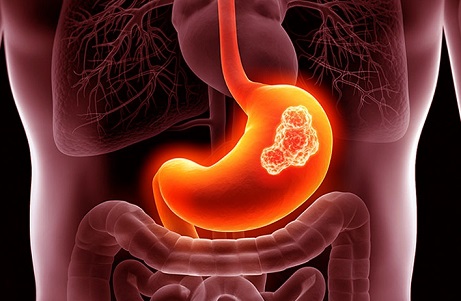Nikhil Prasad Fact checked by:Thailand Medical News Team Jan 16, 2025 3 months, 1 week, 3 days, 6 hours, 55 minutes ago
Medical News: Gastric cancer (GC) remains one of the most prevalent and challenging forms of cancer worldwide. It ranks as the fifth most common cancer type and the fourth leading cause of cancer-related deaths. Despite advancements in treatment, including chemotherapy and surgical options, survival rates for advanced stages of GC remain dismally low. Early detection of GC has the potential to significantly improve outcomes, making the search for reliable diagnostic biomarkers a critical area of research.
 MicroRNA Research Unlocks Potential Biomarker for Gastric Cancer
MicroRNA Research Unlocks Potential Biomarker for Gastric Cancer
Recent studies have highlighted the promise of microRNAs (miRNAs) as biomarkers for various cancers. These small, non-coding RNA molecules regulate gene expression and are often found to be dysregulated in cancer cells. This
Medical News report delves into a groundbreaking study that evaluates plasma miRNA-222 as a potential biomarker for detecting GC.
The Study at a Glance
Researchers from the Department of Surgery at Toho University Sakura Medical Center in Chiba, Japan, and the Department of Life Science and Technology at the Institute of Science Tokyo in Kanagawa, Japan, collaborated on this important study. Their findings, based on rigorous analysis, may provide a foundation for more effective diagnostic tools for GC.
The study aimed to identify miRNAs that could serve as reliable plasma biomarkers for GC. By comparing the sensitivity and specificity of two reverse transcriptase polymerase chain reaction (RT-PCR) methods, the researchers evaluated the performance of miRNA-222 as a GC biomarker.
Methodology and Key Steps
The research team began by analyzing previously identified miRNA abnormalities in GC tissues. Using the miRNA Cancer Association Database, they identified six miRNAs of interest: miR-17, miR-21, miR-31, miR-99b, miR-222, and U6. The team then conducted RT-PCR tests on plasma samples collected from two groups - 26 GC patients and 17 healthy controls. Two RT-PCR methods, polyadenylation RT-PCR (PA-RT) and stem-loop RT-PCR (SL-RT), were compared to determine their efficacy in detecting miRNAs.
Findings and Observations
-Comparing RT-PCR Methods
The researchers found that the PA-RT method had higher sensitivity but lower specificity compared to the SL-RT method. PA-RT produced lower threshold cycle (Ct) values, indicating higher sensitivity, but also showed greater variability. In contrast, SL-RT offered better specificity and consistency, making it the preferred method for further analysis.
-miRNA Expression in Gastric Cancer
Among the miRNAs analyzed, miRNA-222 stood out. The study revealed significantly higher levels of miRNA-222 in the plasma of GC patients compared to the control group. The relative expression of miRNA-222 in GC patients was nearly threefold higher than in healthy individuals. Receiver operating characteristic (ROC) curve analysis confirmed miRNA-222 as the most reliable indicator among the six m
iRNAs studied, with an area under the curve (AUC) value of 0.73.
Interestingly, the study also examined correlations between miRNA levels and other blood parameters. Unlike some other miRNAs, miRNA-222 expression showed minimal correlation with blood biochemical factors, enhancing its reliability as a cancer biomarker.
Implications of miRNA-222 Dysregulation
MiRNA-222 has been implicated in various cancer-related processes, including cell proliferation, invasion, and metastasis. It targets several genes, such as the tumor suppressor PTEN, and modulates key pathways involved in GC progression. The study’s findings reinforce the role of miRNA-222 as an oncogenic miRNA and highlight its potential as a diagnostic tool for early detection.
Challenges and Considerations
While the results are promising, the researchers acknowledged certain limitations. The study did not compare miRNA levels before and after GC treatment, which could provide additional insights into miRNA’s role in disease progression. Moreover, potential contamination from residual blood cells or hemolysis could affect miRNA measurements. Addressing these issues in future studies will be essential to validate miRNA-222’s utility as a biomarker.
Broader Implications and Future Directions
The discovery of plasma miRNA-222 as a biomarker for GC represents a significant advancement in cancer diagnostics. Unlike traditional biomarkers such as carcinoembryonic antigen (CEA) and carbohydrate antigen 19-9 (CA19-9), miRNA biomarkers offer higher specificity and the potential for earlier detection.
Combining miRNA-222 with other upregulated or downregulated miRNAs could further enhance diagnostic accuracy.
Future research should focus on understanding the origins of circulating miRNA-222 and its role in GC. Additionally, larger-scale studies with diverse patient populations are needed to confirm these findings and explore the clinical applicability of miRNA-222 in routine diagnostics.
Conclusion
The study findings provide compelling evidence that plasma miRNA-222 is a promising biomarker for gastric cancer detection. By leveraging the specificity of the SL-RT method, the researchers demonstrated the potential of miRNA-222 to differentiate GC patients from healthy individuals. The ability to detect GC through a simple blood test could revolutionize cancer diagnostics, enabling earlier interventions and improving patient outcomes.
The study findings were published in the peer-reviewed Journal of Clinical Medicine.
https://www.mdpi.com/2077-0383/14/1/98
For the latest on Gastric Cancer, keep on logging to Thailand
Medical News.
Read Also:
https://www.thailandmedical.news/news/scientist-from-romania-discover-that-dopamine-influences-gastric-cancer-progression
https://www.thailandmedical.news/news/south-korean-scientists-discover-that-rosmarinic-acid-from-echium-amoenum-can-help-combat-gastric-cancer
https://www.thailandmedical.news/news/new-study-explores-the-genetic-connection-between-covid-19-and-gastric-cancer
